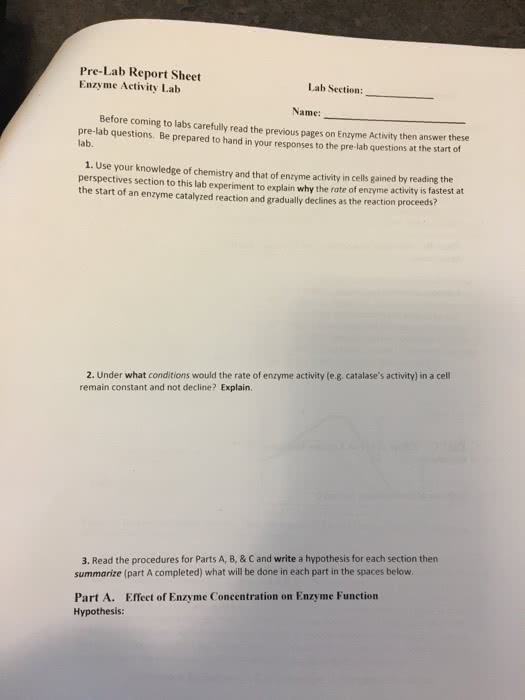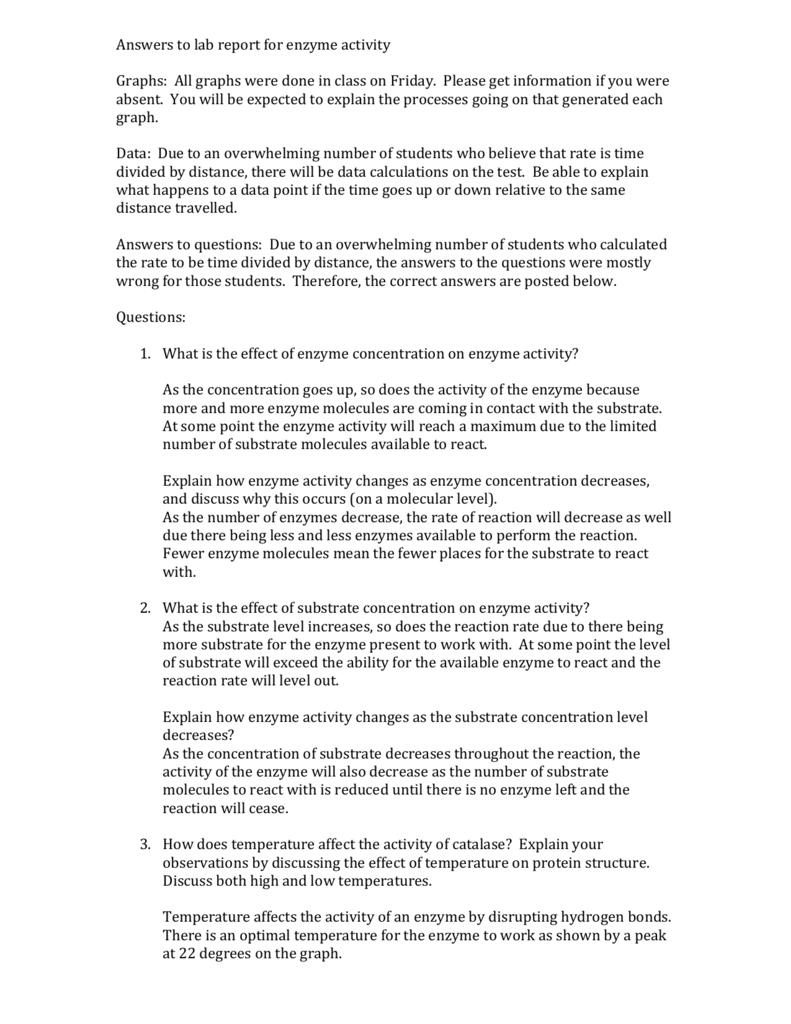

Ask students to make predictions and conduct a virtual experiment based on a PDB structure.
#Enzymes lab report assistant free
Free programs exist to modify a PDB file and predict protein or ligand docking and energy minimization. There are RNAseq and protein mass spectroscopy databases that can be mined for hypothesis-driven experiences. Using Chimera, PyMOL, Jmol or other visualization programs, you can design experiments where students are asked to model active sites, mutate amino acids, and consider the effects of a proposed mutation. You might assign different data sets for different student groups, perhaps some that have a “flaw” and a follow-up repeated experiment.īiomolecular modeling is another interactive option.

Pause and interact with the students, have them break out into groups (if your LMS allows) and make predictions on the experiment at hand. Show the spectrophotometer as absorbance changes to talk about reactants and products. Walk students through an enzyme assay (use some of the resource links below if you don’t have your own) and videotape the assay being conducted - perhaps even do this live in a Zoom or WebEx chat or using the meeting features in your LMS. Include simple quizzes to keep students engaged. You could create a video of a technique and annotate the key steps of a western blot, an SDS-PAGE gel, or protein assay, or keep your teaching assistants employed by having them create videos or demonstrations.

We all know making solutions and buffers are the bane of biochemistry students - so think about designing learning activities on these subjects.ĭeep analysis of the literature is also an excellent way to build laboratory-related skills. Access a Journal of Biological Chemistry article and have the students review the methods sections - they can create presentations on various aspects of the methods of a few key papers and analyze the figures and results sections in a follow-up activity.ĭemonstrations are very valid when in a pinch. Alternatively, consider finding a virtual simulation from the many collections on the Internet. AND let yourself to be creative and imperfect in design of the class.įor lower level laboratories, are there simple experiments that can be conducted at home? Depending on the number of students, mailed pH strips and household items could be used in a titration. If data analysis and critical thinking are part of your laboratory class outcomes, ensure they are built into the design of your lab course. Start with the key learning objectives, and let that drive your decisions. Again, this is something that can be backward-designed. Accept that the experience cannot be fully reproduced. Lab courses are one of the more complicated and difficult spaces to recreate or instruct through remote learning.


 0 kommentar(er)
0 kommentar(er)
